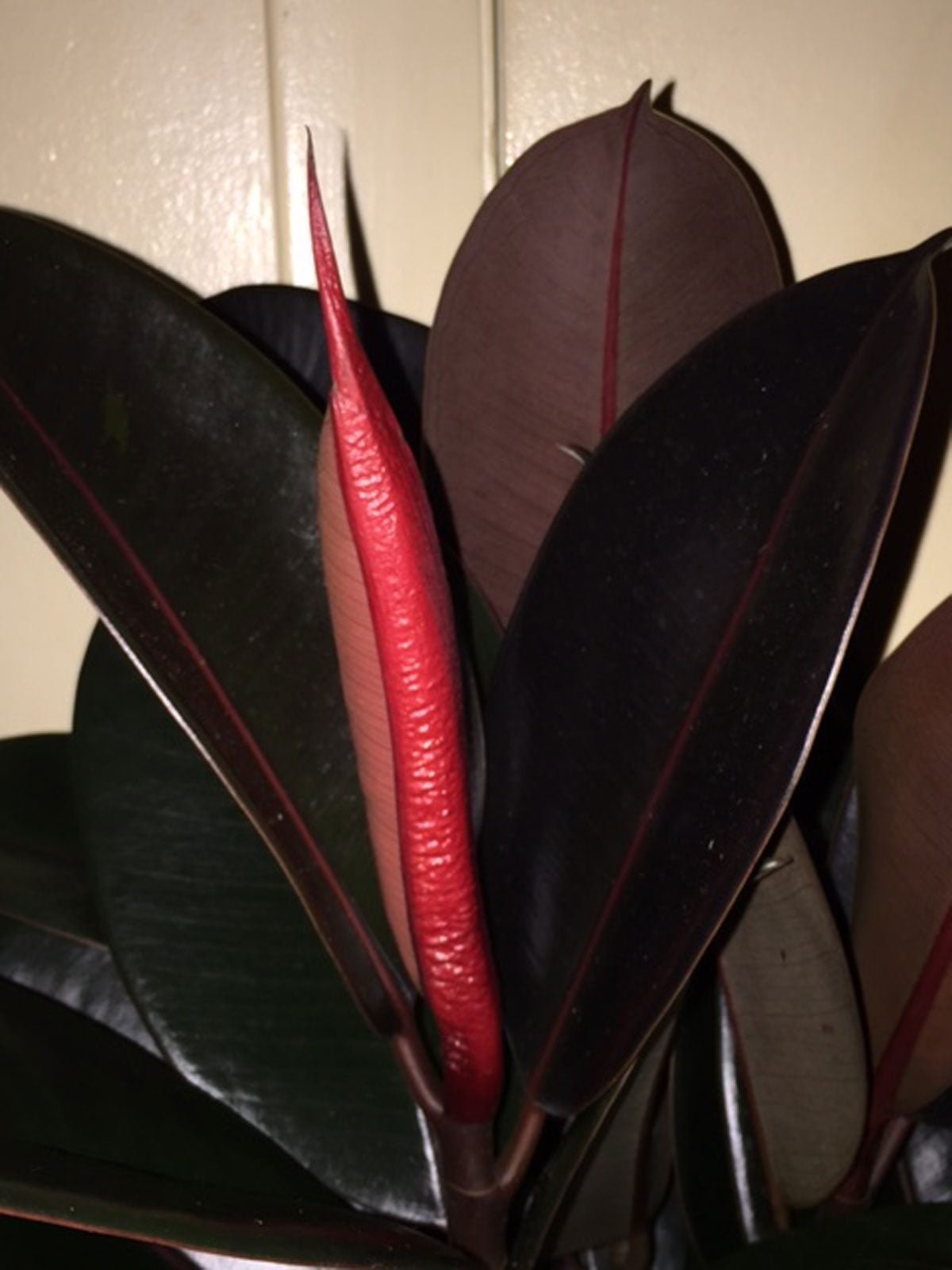Red Sheath On Ficus: Does Rubber Plant Flower

If you’ve grown a rubber tree plant (Ficus elastica), especially the burgundy type, and noticed what appears to be a beautiful flower unfurling, you might begin to wonder if rubber plant blooms or if this is your imagination. Find out in this article.
Does Rubber Plant Flower?
Yes, rubber plant is capable of producing flowers and, subsequently, small fruits. It is a species of fig, after all, related to the figs that are grown commercially to produce the filling in your Newtons. Popular houseplant species such as rubber trees and their cousins, the weeping figs (Ficus benjamina), rarely bloom or yield fruits. Actual rubber plant blooms are small, greenish, and insignificant; they also are unlikely to occur on a rubber plant growing indoors in a container or even one growing outdoors in warm temperate to semi-tropical conditions.
What is the Red Sheath on Ficus?
As colorful as any flower, the red sheath on Ficus may be an eye-catching addition to gardens indoors or out, but it is not a blossom or even the beginning of rubber plant blooms. Truth be told, a flowering rubber tree plant would be less likely to attract attention than one in the process of putting forth new growth that emerges from the burgundy to bright red sheaths on Ficus. The red sheath on Ficus develops when a plant is actively growing and putting forth new leaves, most typically in spring and summer on healthy plants. Not all varieties of rubber plants wrap their developing foliage in red, but widely available cultivars such as ‘Rubra’ and ‘Burgundy’ produce their new growth from a bright to deep red sheath and also have reddish leaf veins and stems. After a new leaf emerges, the sheath typically turns brown and shrivels up. Whatever the predominant color(s) of your rubber plant’s foliage—cultivars with white, pink, cream, and gold variegation are available too—keep it looking its best by following a few simple guidelines:
- Give it a spot where it receives bright, indirect light.
- Wipe the leaves occasionally with a damp cloth to remove dust from the broad smooth surfaces.
- Keep the soil evenly moist during the growing season but avoid overwatering that will cause the leaves to drop. During the fall and winter, allow the upper inch (2.5 cm.) of growing medium to dry out between waterings.
Rubber plants require good drainage but are otherwise easy-to-grow, attractive foliage plants. You may not have a flowering rubber tree plant, but you can enjoy the rubber tree’s colorful foliage for years with just a modest amount of care.
Sign up for the Gardening Know How newsletter today and receive a free copy of our e-book "How to Grow Delicious Tomatoes".